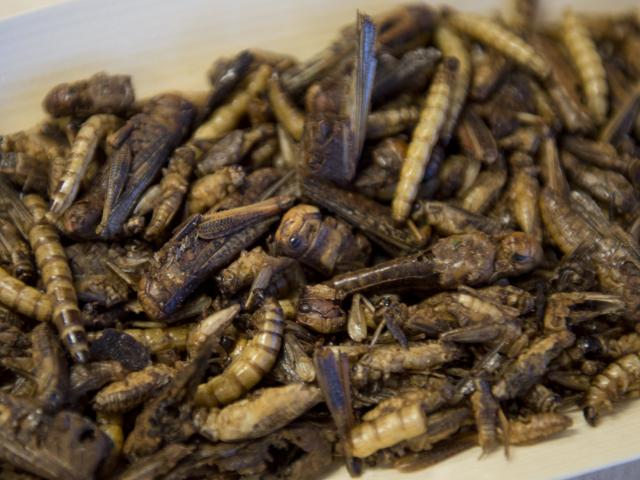
Pupils of John McGlashan College, where the event took place yesterday, and Taieri College were spoken to about the nutritional and environmental value of eating insects.
Tom Fowler, of John McGlashan College, tasted the array of insects available.
He was considering adding the lightly salted crickets to his diet, but the teriyaki mealworms and the escargot snails were not for him.

Tom was not quite ready to exchange his favourite cut of meat — a porterhouse steak — for the insects, but he could see how alternative proteins might become more normalised in the future.
Tom was also the winner of the blindfolded insect eating challenge, where pupils taped their eyes shut and tried to keep a straight face while eating unknown bugs.
‘‘I just pretended it was nice food and it kind of worked.’’
John McGlashan College director of agribusiness Dr Craig Preston said the future of alternative proteins was looking bright.
Insects were already eaten in about 80% of countries around the world, he said.

It took only a few litres of water to produce 1kg of insects, but about 8000 litres of water to produce a kilogram of beef, he said.
The texture and the ‘‘yuck’’ factor kept the Western world from embracing the cuisine, but he hoped that would soon change.
He compared it to eating raw fish, which was unheard of until the 1990s but was now common.
He believed with the right promotion people would be more open to introducing alternative proteins into their diet.
Comments
Radical changes to the food system are needed to safeguard our food supply and combat malnutrition in the face of climate change, environmental degradation and epidemics, according to a recent report from Cambridge Uni.
Global malnutrition could be eradicated by farming foods including spirulina, chlorella, larvae of insects such as the house fly, mycoprotein (protein derived from fungi), and macro-algae such as sugar kelp.
Floods, frosts, droughts, dry spells, wildfires, viruses, pathogens and parasites all amplified by climate change put our current food systems at risk. To future-proof our food supply we need to integrate completely new ways of farming into the current system.
Two billion people experience food insecurity, including over 690 million people undernourished and 340 million children suffering micro-nutrient deficiencies.
We already have many disgusting and potentially unhealthy ingredients added to the foods we eat, particularly in processed foods so I have no doubt that soon we will be seeing these foods added to burgers, sausages nuggets and alike.
shrimps, prawns, crays ...
tree tomatoes, Chinese gooseberries ...
A bit of marketing is all that is needed.
But if, instead of being grilled, mealworms are spun to extract the good quality protein, then who among the fussy feeders will notice.
The deep problem, that nobody seems able to talk about is the seven billion people. Back in 'boomer' days this was recognised as an impending problem, now it is clearly among problems of which we do not speak. No matter the band aids we will destroy the world.












